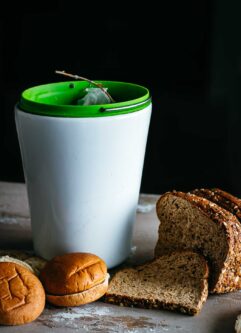Can you compost bread? (+ Best and Worst Breads for Your Compost Bin)
Wondering if bread can be composted? This guide to composting bread tells you when it’s compostable (and when it’s not!) and how to get the most out of it for your compost pile.
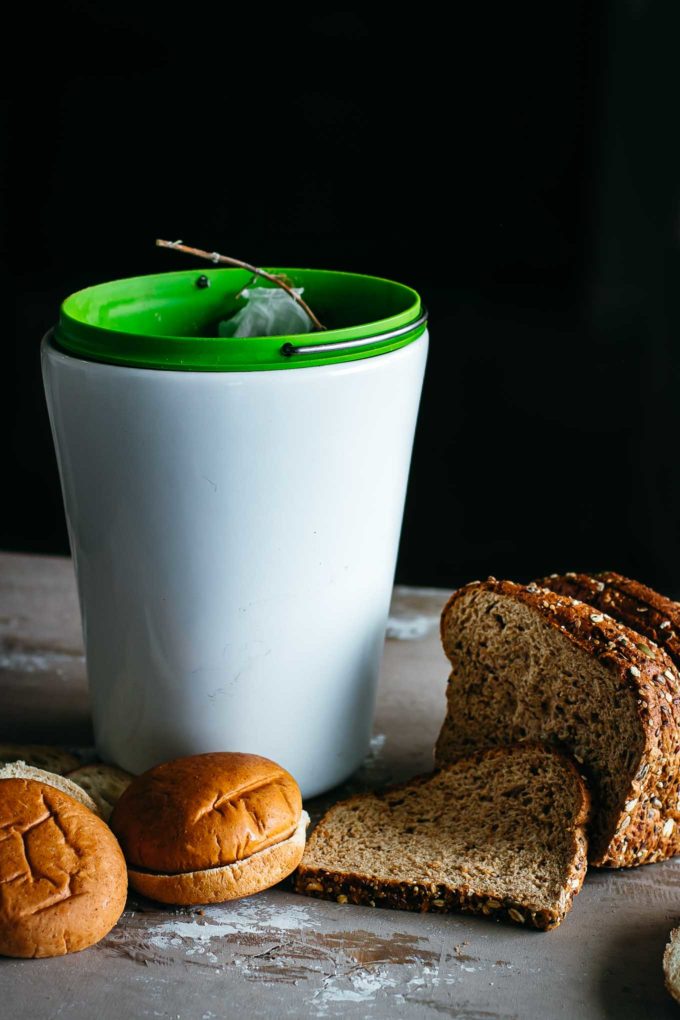
Want to Save This Recipe?
Enter your email & I’ll send it to your inbox. Plus, get new plant-based recipes in your inbox!
By submitting this form, you consent to receive emails from Fork in the Road.
Are you a bread eater looking to take your green lifestyle to the next level? We’re here to help! Before you toss that leftover bread into the compost bin, there are some factors to keep in mind to ensure a smooth composting process.
👉 Bread can be composted when broken into small pieces. It decomposes quickly and adds nitrogen to your compost pile. However, some breads have ingredients added to them that are non-compostable. There are also certain stages when bread is better for composting than others.
To know if you can compost your leftover bread, you first must know what to look for in the ingredient label and the correct steps to take while preparing it for the compost pile.
Ready to learn if your bread can be composted? Let’s do it!
🍞 How to compost bread
There are a few simple steps to follow when composting bread. These will help speed along the decomposition process and avoid common compost issues.
- Use an enclosed, well-covered compost bin. This will help prevent odors and pests, which are attracted to open compost piles with food.
- Break bread into small pieces. Small pieces of bread compost faster and are easier to mix throughout the compost pile. Bread should be mixed well with the rest of the compost materials to maintain a balance of nutrients.
- Add bread to compost slowly. If you have a lot of bread to compost, it can be helpful to add it to the pile a little at a time depending on the size of your compost bin. You can store old bread in the freezer or in a separate container until you’re ready to compost it.
- Bury bread in the compost pile. Instead of tossing the bread on top, dig a hole in your compost pile and bury the bread with other ingredients. This will help it break down more quickly, conceal the odor, and keep pests away.
- Sprinkle in some extra soil. Adding healthy soil to your compost will aid in the composting process, helping the bread decompose along with the other ingredients.
Keep in mind that bread has a high nitrogen content and is considered green compost material. It should be mixed with plenty of brown materials like straw, leaves, and paper to maintain a proper carbon to nitrogen ratio.
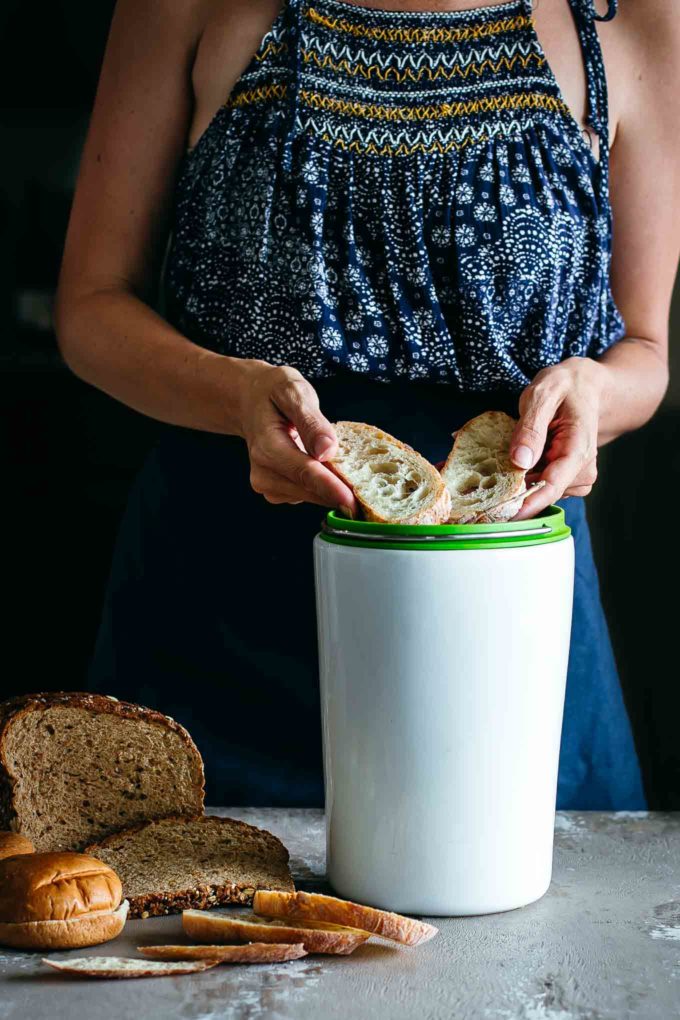
🥖 What is the best bread to compost?
Some types of bread are better for composting than others. You will want to consider whether or not it’s stale or moldy and how processed it is before getting it ready for compost.
Moldy bread vs. stale bread
Moldy bread and stale bread are excellent choices for composting. They will break down more quickly in compost compared to fresh bread.
Since moldy bread has already started decomposing, it could be seen as the better option of the two. If you can, it is a good idea to wait until stale bread starts molding before adding it to compost.
Ingredients to look for before tossing bread in compost
Many types of bread are processed with added ingredients that are not compost-friendly. Before throwing your bread in the compost, be sure to check for the following:
- Dairy ingredients: While dairy products are biodegradable, they are highly attractive to pests. If your bread contains ingredients like butter or cheese, it is probably best to leave it out of your compost pile. However, if you choose to add it to compost, make sure to bury the bread a bit deeper and cover it with soil or carbon-rich materials.
- Plastic packaging or metal bread ties: Plastic and metal are definite no’s for the compost bin as they’re impossible to break down. Watch out for any plastic packaging that may stick to your bread before adding it to compost.
💦 How to avoid problems when composting bread
There are a couple of issues that may arise if you add bread to your compost. Some strategies to manage those are listed below.
Preventing pests
Bread often attracts pests to compost, more so than other types of food. This problem can easily be solved by adding a lid to your compost or burying bread deep into the soil. This will help prevent animals and insects from accessing it.
Balancing the moisture
If you compost moldy bread, there is a possibility that it could disrupt your soil’s moisture balance. You can fix this problem by composting bread with fruit or veggie scraps or covering it up with brown materials like sawdust, dead leaves, or paper.
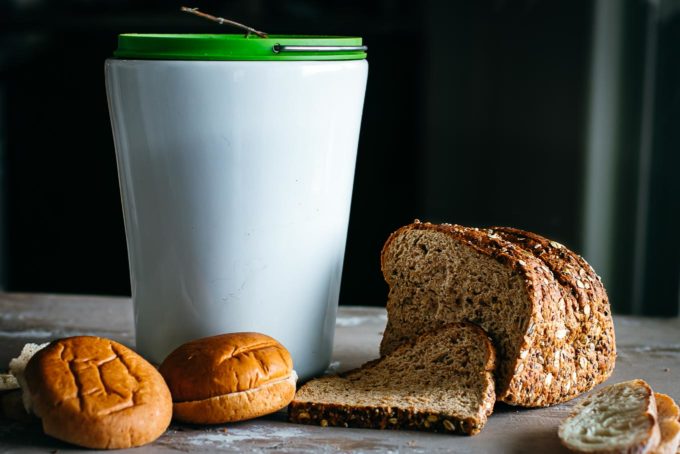
🥐 Composting bread-like items
Foods similar to bread can typically be added to compost. However, there are a few factors you should keep in mind before composting other bread-like items.
Pasta
Plain pasta without any added ingredients is great for composting.
If the pasta is covered in sauce or cream, this can attract pests and negatively impact the carbon nitrogen ratio. It will take longer for the pasta to break down if it contains dairy.
Additionally, you should not add pasta to compost if it has a lot of oil on it. This can affect compost health and make it hard for certain microorganisms to thrive.
Just like with bread, pasta should be added to compost slowly and distributed through the pile for the best results.
Baked Goods
Compared to regular bread, baked goods tend to be high in sugar and fats which can attract ants to your compost.
If you have leftover baked goods, you should follow the same process as composting bread to prevent pests and other issues. It is best to avoid tossing ultra-processed baked goods in the compost bin, since these often contain ingredients that could harm the compost.
♻️ Eco-friendly ways to use leftover bread
Of course your leftover bread is better off in the compost bin than it is in a landfill. However, the best way to reduce food waste is to eat it! If you have bread in your house that isn’t moldy yet, here are some ways to use it:
- Make croutons! Making homemade croutons from old or stale bread is one of our favorite ways to use bread leftovers. Try making Homemade Ciabatta Croutons, Rye Bread Croutons, or Sourdough Croutons.
- Combine bread with veggies and make a delicious breakfast recipe, like Mushroom Dijon Breakfast Strata.
- Mix it into a bread salad with other fresh veggies and herbs. We suggest making our Summer Peach Panzanella Salad!
- Make toast or a sandwich for a quick and easy meal, like Basil Cherry Toast, Honey Fig Toast or Roasted Rhubarb Brie Sandwich.
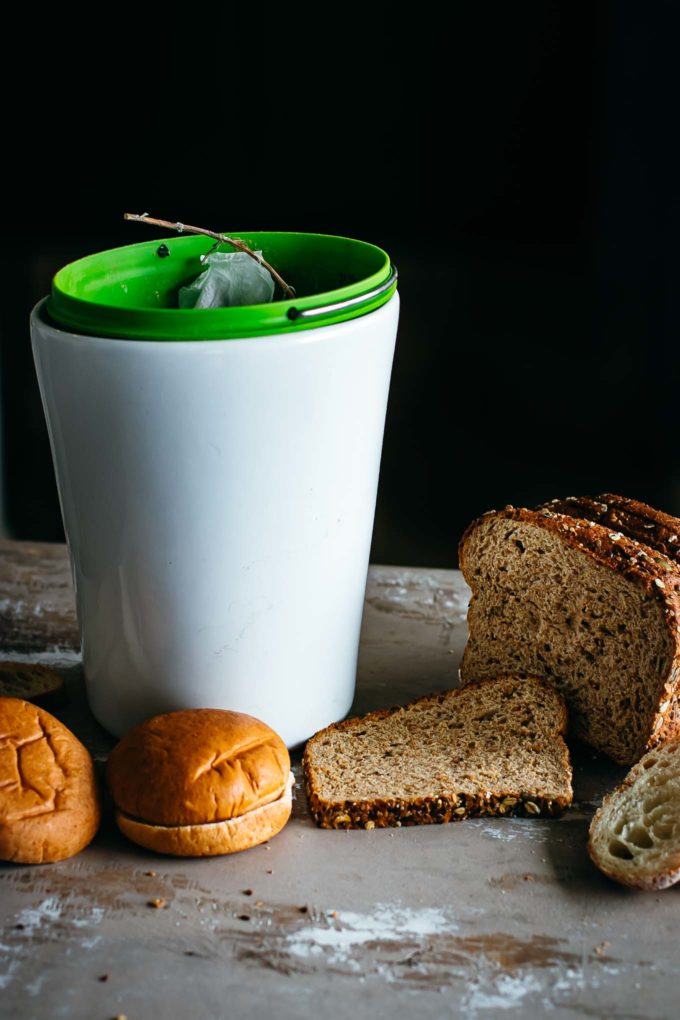
💡 More zero waste kitchen + composting tips
Want more tips for going green in the kitchen? We’ve got you covered with these sustainable kitchen guides:
- Zero Waste Kitchen Start Guide
- Can You Compost Single-Use Tea Bags?
- Can Cooked Vegetables be Composted?
- How to Compost Paper Bags (and Which Bags to Trash)
♻️ Want more inspiration for going green in the kitchen? Join the Green Living Community for plant-based recipes, sustainable kitchen hacks, and get our FREE guide to meal planning to reduce food waste!

